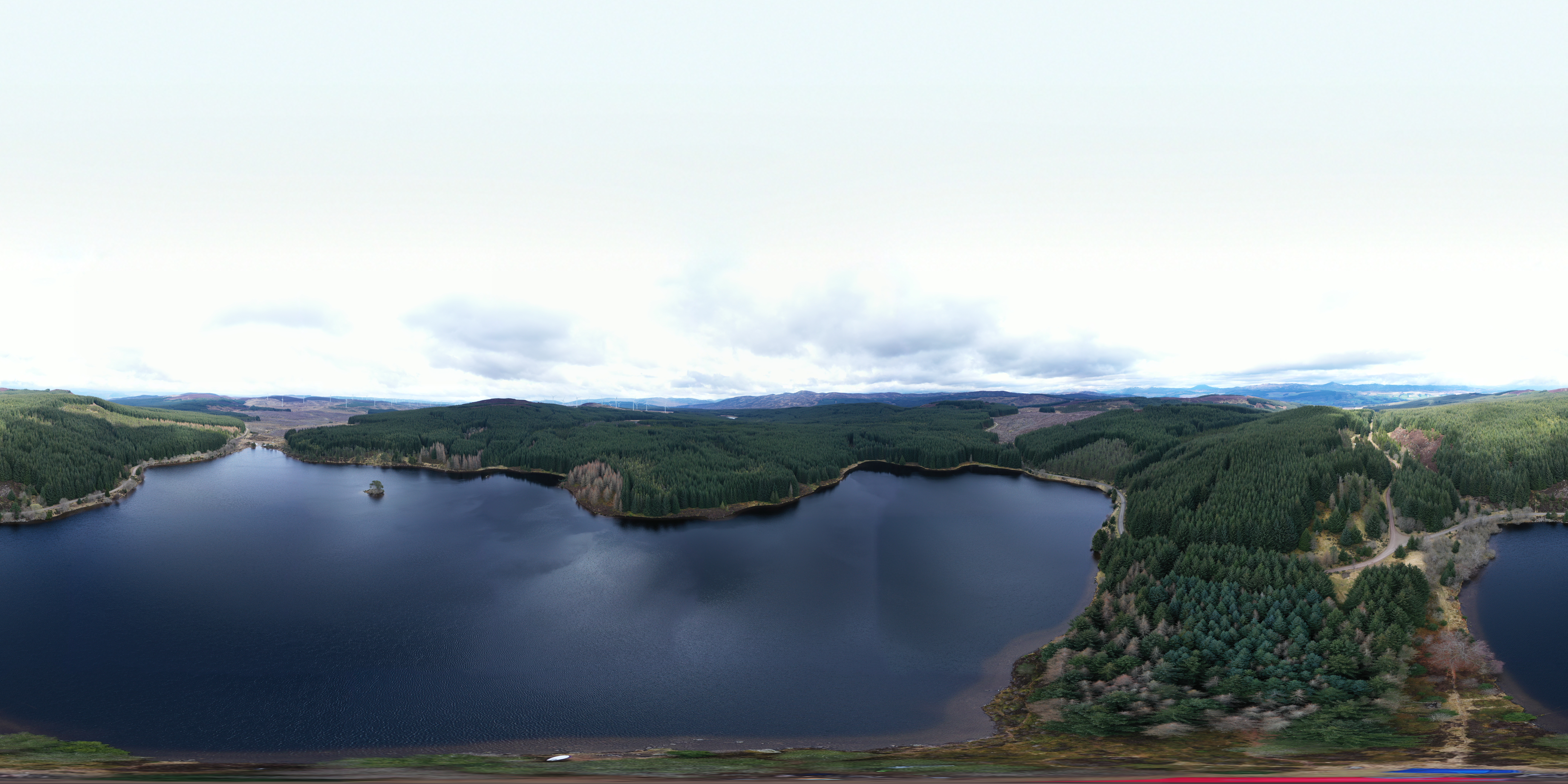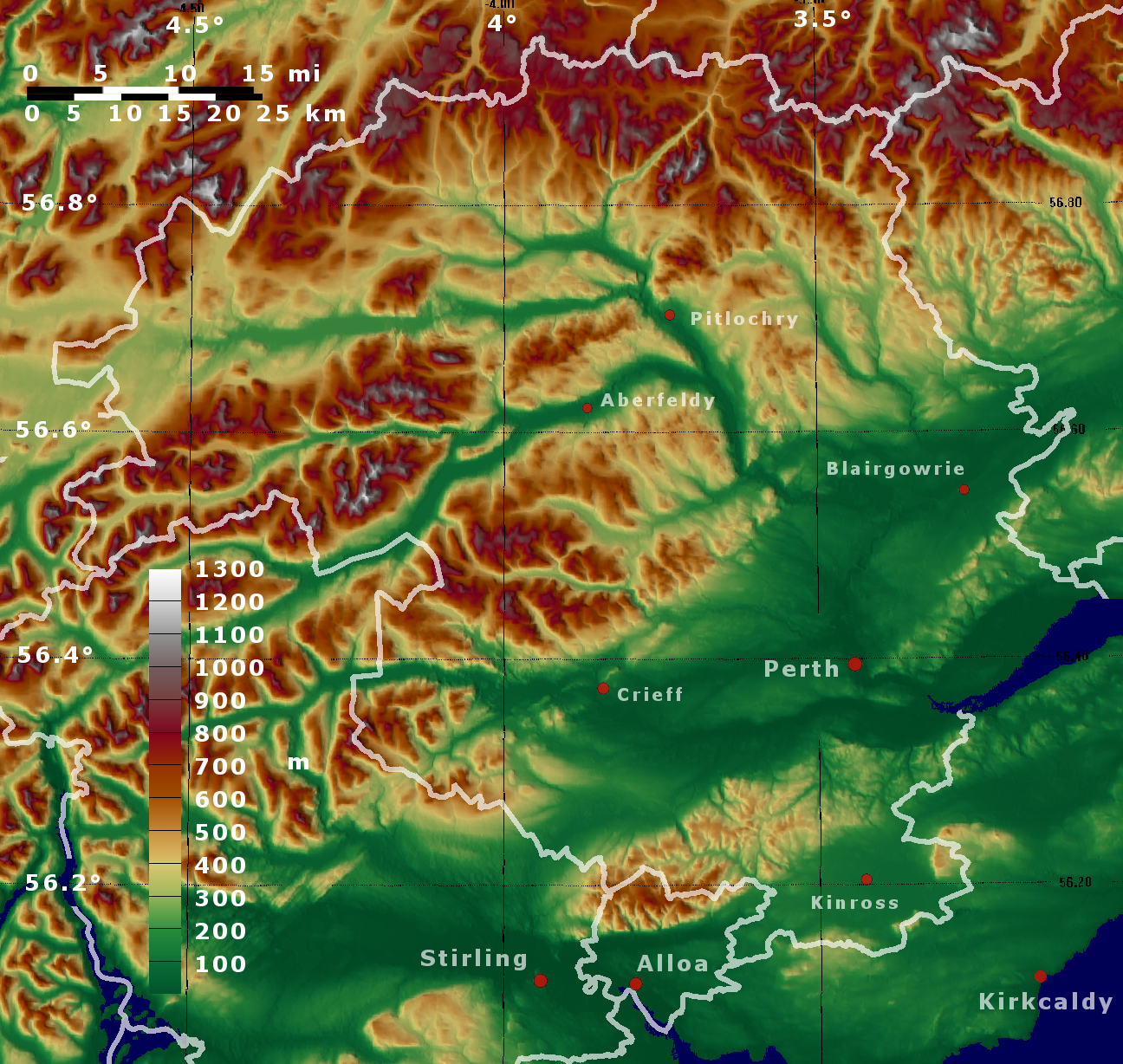|
Loch Kennard
Loch Kennard is freshwater loch located south-east of Aberfeldy, Perth and Kinross, Aberfeldy, situated on Grandtully Hill in Perth and Kinross within Griffin Forest in Scotland. Geography Loch Kennard is located within and surrounded Griffin Forest and is one of a handful of small lochs within the forest that are popular with walkers. On the east shore of the loch lies the remains of an old boatshed. An accompanying Loch Kennard Lodge, that was constructed in 1870 for wealthy fishing parties, was removed when Griffin Forest was planted. Island Loch Kennard contains a small island, almost circular, measuring some 18m long, north to the south bearing, by 16m wide, and possibly artificial, although not a crannog. The island contains the ruins of a building measuring some 1.7m high, 6.3m long, on a bearing of east to west bearing, by 3.4m wide, with walls almost 0.7m thick. The purpose of the building is unknown. References {{reflist Freshwater lochs of Scotland, Kennard L ... [...More Info...] [...Related Items...] OR: [Wikipedia] [Google] [Baidu] |
Loch
''Loch'' ( ) is a word meaning "lake" or "inlet, sea inlet" in Scottish Gaelic, Scottish and Irish Gaelic, subsequently borrowed into English. In Irish contexts, it often appears in the anglicized form "lough". A small loch is sometimes called a lochan. Lochs which connect to the sea may be called "sea lochs" or "sea loughs". Background This name for a body of water is Insular Celtic languages, Insular CelticThe current form has currency in the following languages: Scottish Gaelic, Irish language, Irish, Manx language, Manx, and has been borrowed into Scots language, Lowland Scots, Scottish English, Irish English and Standard English. in origin and is applied to most lakes in Scotland and to many sea inlets in the west and north of Scotland. Many of the loughs in Northern England have also previously been called "meres" (a Northern English dialect word for "lake", and an archaic Standard English word meaning "a lake that is broad in relation to its depth"), similar to th ... [...More Info...] [...Related Items...] OR: [Wikipedia] [Google] [Baidu] |
Aberfeldy, Perth And Kinross
Aberfeldy () is a burgh in Perth and Kinross, Scotland, on the River Tay. A small market town, Aberfeldy is located in Highland Perthshire. It was mentioned by Robert Burns in the poem ''The Birks of Aberfeldy'' and in the Ed Sheeran song "The Hills of Aberfeldy". Etymology Aberfeldy means 'mouth of the Peallaidh'. The first element of the name is the Pictish language, Pictish word ''aber'' 'river mouth'. The river-name perhaps incorporates the name of a water-sprite known as Peallaidh, which in Gaelic means 'shaggy'. Aberfeldy is recorded in 1526 as ''Abrefrally'' and in 1552 as ''Abirfeldy''. History Early history Beyond its association with Burns, who mentioned Aberfeldy in his poem ''The Birks of Aberfeldy'', the town is known for Wade's Bridge, built in 1733 and designed by architect William Adam (architect), William Adam, father of Robert Adam. General George Wade considered this bridge to be his greatest accomplishment. Aberfeldy is also mentioned in the traditional "Lo ... [...More Info...] [...Related Items...] OR: [Wikipedia] [Google] [Baidu] |
Perth And Kinross
Perth and Kinross (; ) is one of the 32 council areas of Scotland, and a Lieutenancy areas of Scotland, lieutenancy area. It is bordered by Highland (council area), Highland and Aberdeenshire to the north, Angus, Scotland, Angus, Dundee, and Fife to the east, Clackmannanshire to the south, and Stirling (council area), Stirling and Argyll and Bute to the west. Geographically the area is split by the Highland Boundary Fault into a more mountainous northern part and a flatter southern part. The northern area is a popular tourist spot, while agriculture makes an important contribution to the southern part of the area. The area is run by Perth and Kinross Council, which is based in Perth, Scotland, Perth. History The area takes its name from the two historical Shires of Scotland, shires of Perthshire and Kinross-shire. Each was administered by a Sheriff principal, sheriff from medieval times, supplemented by Commissioners of Supply, commissioners of supply from 1667 and then by a ... [...More Info...] [...Related Items...] OR: [Wikipedia] [Google] [Baidu] |
Scotland
Scotland is a Countries of the United Kingdom, country that is part of the United Kingdom. It contains nearly one-third of the United Kingdom's land area, consisting of the northern part of the island of Great Britain and more than 790 adjacent Islands of Scotland, islands, principally in the archipelagos of the Hebrides and the Northern Isles. To the south-east, Scotland has its Anglo-Scottish border, only land border, which is long and shared with England; the country is surrounded by the Atlantic Ocean to the north and west, the North Sea to the north-east and east, and the Irish Sea to the south. The population in 2022 was 5,439,842. Edinburgh is the capital and Glasgow is the most populous of the cities of Scotland. The Kingdom of Scotland emerged as an independent sovereign state in the 9th century. In 1603, James VI succeeded to the thrones of Kingdom of England, England and Kingdom of Ireland, Ireland, forming a personal union of the Union of the Crowns, three kingdo ... [...More Info...] [...Related Items...] OR: [Wikipedia] [Google] [Baidu] |
Loch Kennard 360
''Loch'' ( ) is a word meaning "lake" or " sea inlet" in Scottish and Irish Gaelic, subsequently borrowed into English. In Irish contexts, it often appears in the anglicized form "lough". A small loch is sometimes called a lochan. Lochs which connect to the sea may be called "sea lochs" or "sea loughs". Background This name for a body of water is Insular CelticThe current form has currency in the following languages: Scottish Gaelic, Irish, Manx, and has been borrowed into Lowland Scots, Scottish English, Irish English and Standard English. in origin and is applied to most lakes in Scotland and to many sea inlets in the west and north of Scotland. Many of the loughs in Northern England have also previously been called "meres" (a Northern English dialect word for "lake", and an archaic Standard English word meaning "a lake that is broad in relation to its depth"), similar to the Dutch , such as the ''Black Lough'' in Northumberland. Some lochs in Southern Scotland h ... [...More Info...] [...Related Items...] OR: [Wikipedia] [Google] [Baidu] |
Griffin Forest
The griffin, griffon, or gryphon (; Classical Latin: ''gryps'' or ''grypus''; Late and Medieval Latin: ''gryphes'', ''grypho'' etc.; Old French: ''griffon'') is a -4; we might wonder whether there's a point at which it's appropriate to talk of the beginnings of French, that is, when it wa ...: ''griffon'') is a legendary creature with the body, tail, and Hindlimb">back legs of a lion, and the head and wings of an eagle">lion.html" ;"title="Hindlimb">back legs of a lion">Hindlimb">back legs of a lion, and the head and wings of an eagle with its talons on the front legs. Overview Because the lion was traditionally considered the king of the beasts and the eagle the king of the birds, by the Middle Ages, the griffin was thought to be an especially powerful and majestic creature. Since classical antiquity, griffins were known for guarding treasures and priceless possessions. In Greek and Roman texts, griffins and Arimaspians were associated with gold deposits of Central Asia. Th ... [...More Info...] [...Related Items...] OR: [Wikipedia] [Google] [Baidu] |
Freshwater Lochs Of Scotland
Fresh water or freshwater is any naturally occurring liquid or frozen water containing low concentrations of dissolved salts and other total dissolved solids. The term excludes seawater and brackish water, but it does include non-salty mineral-rich waters, such as chalybeate springs. Fresh water may encompass frozen and meltwater in ice sheets, ice caps, glaciers, snowfields and icebergs, natural precipitations such as rainfall, snowfall, hail/ sleet and graupel, and surface runoffs that form inland bodies of water such as wetlands, ponds, lakes, rivers, streams, as well as groundwater contained in aquifers, subterranean rivers and lakes. Water is critical to the survival of all living organisms. Many organisms can thrive on salt water, but the great majority of vascular plants and most insects, amphibians, reptiles, mammals and birds need fresh water to survive. Fresh water is the water resource that is of the most and immediate use to humans. Fresh water is not always po ... [...More Info...] [...Related Items...] OR: [Wikipedia] [Google] [Baidu] |
Lochs Of Perth And Kinross
''Loch'' ( ) is a word meaning "lake" or " sea inlet" in Scottish and Irish Gaelic, subsequently borrowed into English. In Irish contexts, it often appears in the anglicized form "lough". A small loch is sometimes called a lochan. Lochs which connect to the sea may be called "sea lochs" or "sea loughs". Background This name for a body of water is Insular CelticThe current form has currency in the following languages: Scottish Gaelic, Irish, Manx, and has been borrowed into Lowland Scots, Scottish English, Irish English and Standard English. in origin and is applied to most lakes in Scotland and to many sea inlets in the west and north of Scotland. Many of the loughs in Northern England have also previously been called "meres" (a Northern English dialect word for "lake", and an archaic Standard English word meaning "a lake that is broad in relation to its depth"), similar to the Dutch , such as the ''Black Lough'' in Northumberland. Some lochs in Southern Scotland ... [...More Info...] [...Related Items...] OR: [Wikipedia] [Google] [Baidu] |



